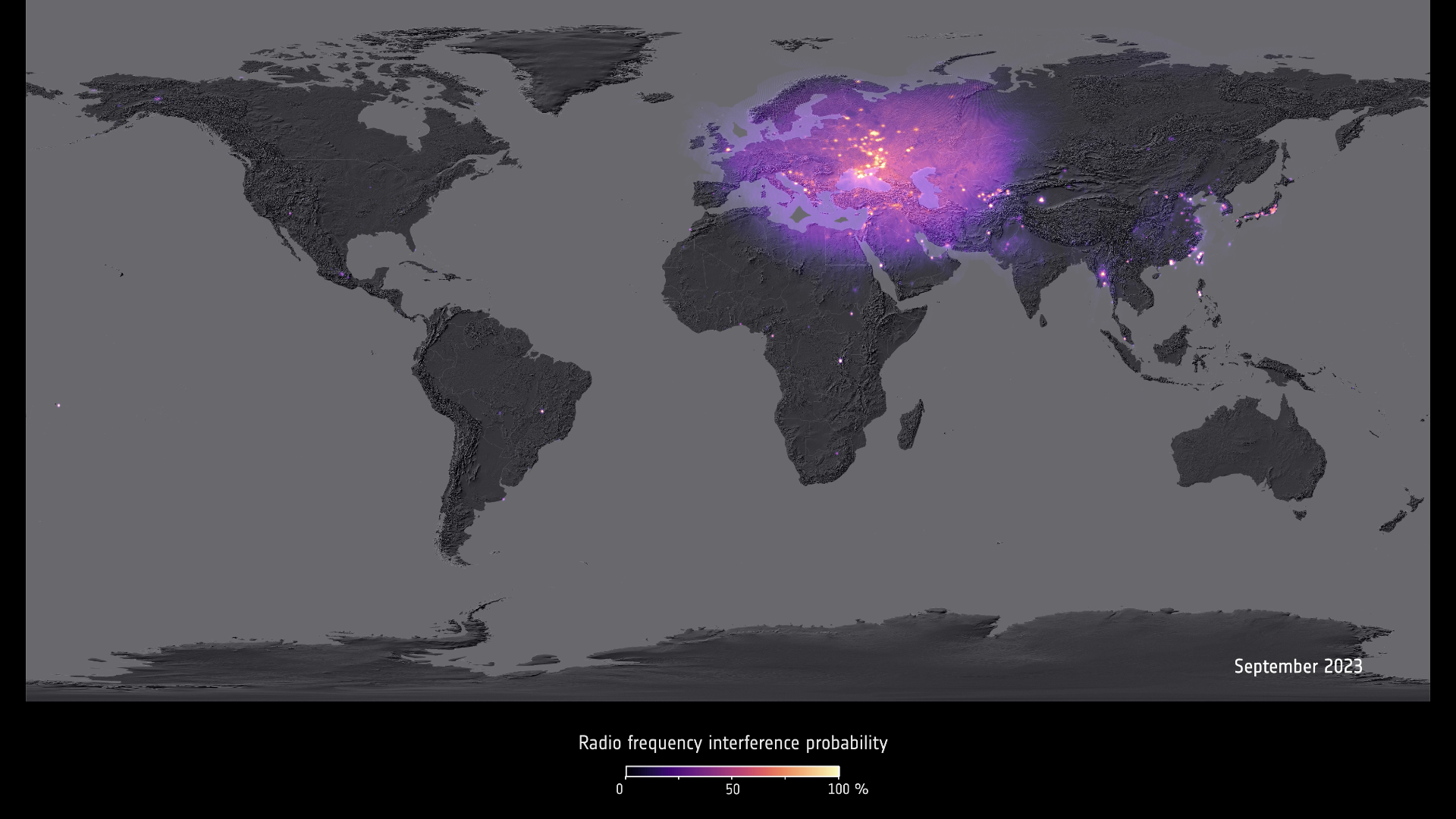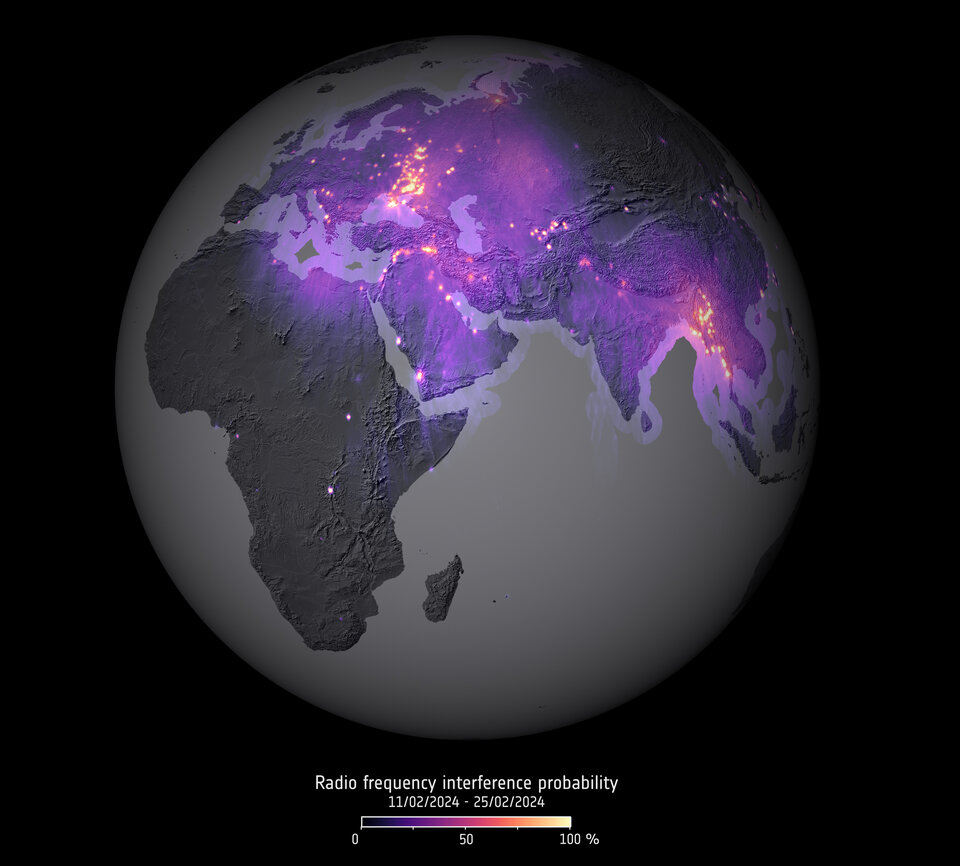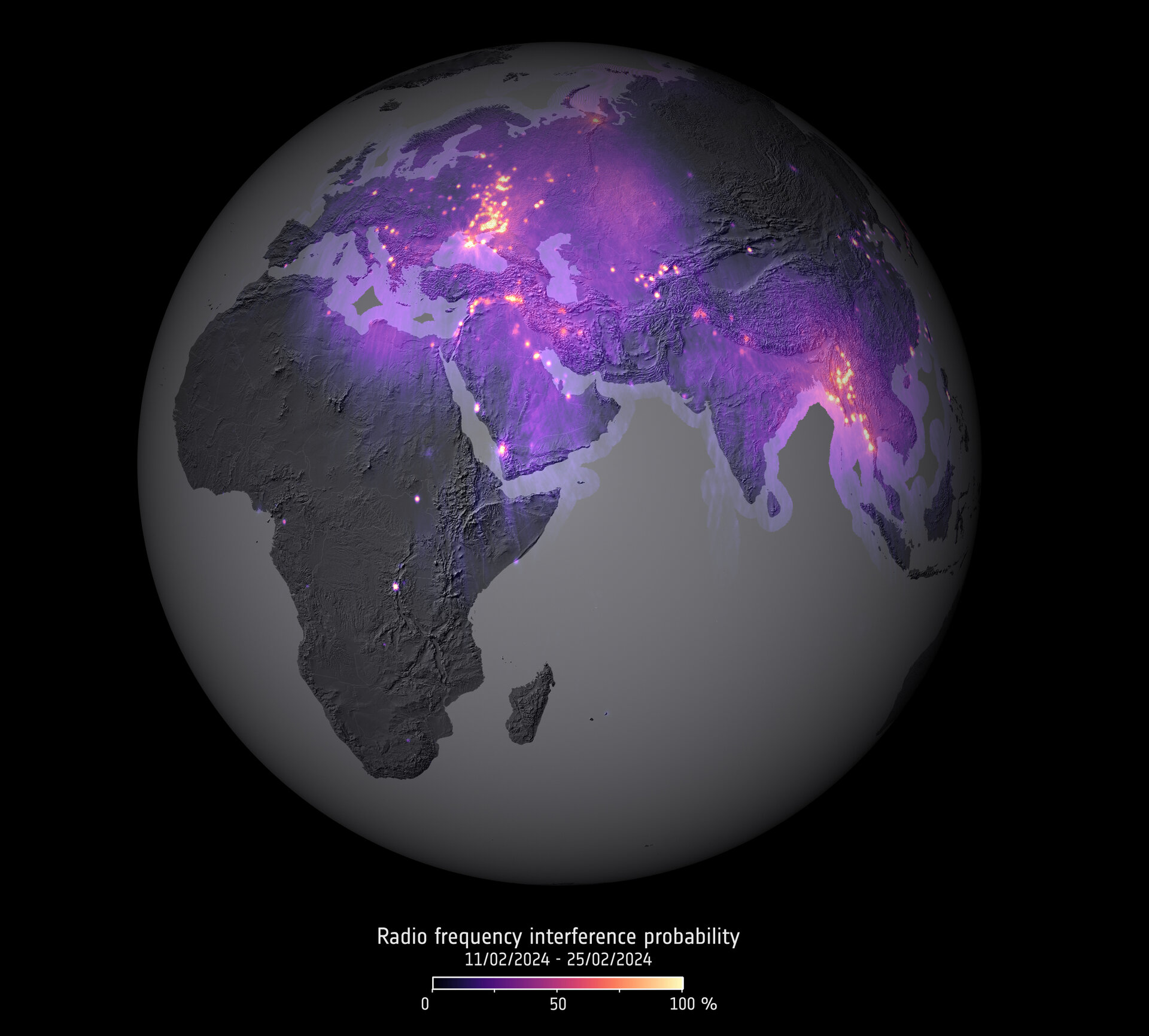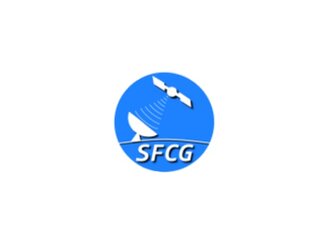Managing frequencies for Earth observation
The electromagnetic spectrum refers to the entire range of electromagnetic radiation, organised by wavelength or frequency. It includes various types of electromagnetic waves, such as radio waves, microwaves, infrared radiation, visible light, ultraviolet radiation, X-rays and gamma rays. Each part of the spectrum represents a different range of wavelengths and has distinct properties and interactions with matter.
The electromagnetic spectrum is fundamental to observing Earth from space – all satellites use it in one way or another.
The microwave part of the spectrum, in particular, is needed to operate and control the satellite in space and to download the data back to Earth.
Some satellites also need microwave frequencies to make scientific measurements. For example, the microwave spectrum is needed to measure the height of seas and oceans, and to measure land displacement after earthquakes.
In general, measurements made using the microwave spectrum are useful to monitor climate change, to enable weather forecasts and to observe various physical phenomena such as variations in the salinity in the world’s oceans.


Access the video
However, the electromagnetic spectrum has to be shared with many other applications. These include mobile communication networks, Wi-Fi, governmental uses, and many more – and this can result in the signals being affected by interference.
Therefore, rules have been set on how to use various portions of the spectrum to minimise interference between all the different applications vying to use it.
These rules are defined, at the global level, by the International Telecommunication Union (ITU), which is a United Nations agency specialising in information and communication technologies. The ITU organises World Radiocommunication Conferences where rules on spectrum usage are enshrined into an international treaty called Radio Regulations.
As a member of the ITU, ESA participates in the activities of the ITU, including the World Radiocommunication Conferences, which are held every three to four years.

ESA has to protect the use of the spectrum, including making sure that missions orbiting Earth and other celestial bodies, missions for Positioning, Navigation and Timing for example, can function as intended.
For ESA’s Earth Observation Programmes, the focus is naturally on the satellites measuring different aspects of our planet from space. For this, ESA, within the ITU, focuses on protecting the needs of the current and planned satellites.
In preparation for the next World Radiocommunication Conference in 2027, ESA has gathered a group of expert scientists to provide views on activities related to frequency regulation. The group, called the European Scientists on Spectrum for Earth Observation (ESSEO), will improve the interactions between the European science community and those more closely involved in frequency regulatory activities.
Despite the current rules on spectrum use, satellites sometimes suffer from interference – radio frequency interference, or RFI. This can be detrimental in several ways, including loss of data, risk of damage to the satellite receiver and biased or uncertain measurements.
Satellite sensors can be affected by RFI in several frequency bands and over different parts of the world.
Some examples of RFI affecting sensors on Earth observing satellites are listed by the Space Frequency Coordination Group (SFCG).

In particular, for the Soil Moisture Ocean Salinity (SMOS) mission, the ESA RFI Monitoring and Information Tool (ERMIT) has been developed to record instances of RFI.
With this information, cases of RFI affecting SMOS are often reported to the ITU, which can lead to identifying the device on ground responsible for causing the interference, which, in turn, can lead to turning off or reconfiguring that device, thus preventing future RFI.
Whenever RFI is not preventable and it affects satellite sensors, then it has to be accurately detected in the data and accounted for.
ESA is designing future missions so that they are compliant with the rules on spectrum use. In addition, ESA has to be mindful that that new missions may well be affected by RFI – and this may mean that there could be constraints on the exact frequencies and bandwidths that satellites are able to use, or that their data may need to be processed for RFI before the data are released for scientific use.














 Germany
Germany
 Austria
Austria
 Belgium
Belgium
 Denmark
Denmark
 Spain
Spain
 Estonia
Estonia
 Finland
Finland
 France
France
 Greece
Greece
 Hungary
Hungary
 Ireland
Ireland
 Italy
Italy
 Luxembourg
Luxembourg
 Norway
Norway
 The Netherlands
The Netherlands
 Poland
Poland
 Portugal
Portugal
 Czechia
Czechia
 Romania
Romania
 United Kingdom
United Kingdom
 Slovenia
Slovenia
 Sweden
Sweden
 Switzerland
Switzerland






























